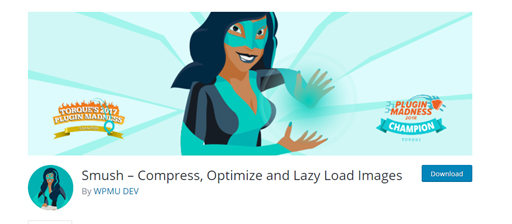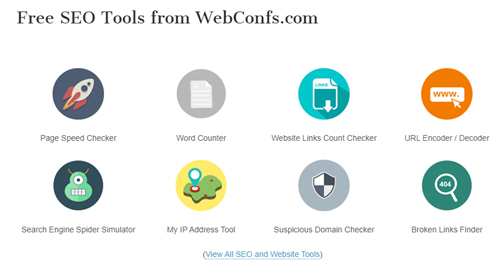Here are some of the on-page SEO tools that medical businesses can consider.
- Google Search Console: Earlier known as Webmaster Tools, Google Search Console is the best way to get feedback from Google about any red flag that your website has. The Coverage section helps to find out issues such as web pages that are not being crawled or blocked, 404 error, redirects, and duplicate content. It also lets you submit a URL for sitemap and make submission requests when individual URLs are removed by Google. This tool helps to examine the performance of the website according to the device used to connect to it – desktop, mobile etc. This is because Google favors mobile-friendly websites to cater to the increasing number of mobile users. Google Search Console also has additional tools to find out your website links profile, both external and internal, and keywords users use to find your website. It also alerts about security issues like hacked plugin that your CMS is using. Google Search Console is an ideal tool that helps webmasters and web owners to get a clear understanding of the basics of their website and any related SEO problems.
- Screaming Frog: Screaming Frog offers a wide range of SEO tools and it has log file analyzer too, which is an overlooked part of SEO. Screaming Frog tool helps you to upload your server log files and analyze them as per various criteria. Similarly, if you find any files that are not being crawled, this tool lets you identify the problem with your website links to its own content that general SEO tools would not be able to find. It also helps find out bad bots that may be eating up your bandwidth or slowing down your website performance. This tool allows to find more about the various errors – 404 errors, errors based on timeouts and other permission issues. The Screaming Frog Log File Analyzer allows you to filter your own raw data about how to better optimize for search engines and human users alike.
Source-https://www.screamingfrog.co.uk/ - Crazy Eggs: They were the first ones to come up with heat mapping to the wider internet. Heat mapping is a way of following the user experience of a website with eye tracker to monitor where the user focus is on the page. Though heat mapping is not an SEO tool technically, it has interest in SEO circles because of its overlap with on-page design and development for general SEO and marketing purposes. A notable aspect of heat mapping is that audiences are generally drawn to the top left section of the page content. This is because we are used to reading from left to right in English, and therefore this is the area that marketers like to aim to place their CTAs. But for SEO purposes, it needs an in-depth analysis, especially in terms of the correct placement of navigation link. Crazy Eggs provides heat mapping services and offer heatmaps, scroll maps, and click reports. This allows SEOs to better apply content and CTAs, and this provides better insights when it comes to website analytics tools.
Source-https://w3.crazyegg.com/ - Woorank: This is an on-page SEO checker and it has paid as well as free version. To use this tool, you can enter your website or webpage URL in the search box and this tool begins processing. Woorank considers issues like title length, meta description and headings. It also examines keywords on the page, alt tags for images and so on. It also checks whether you have a robots.txt file and if your sitemaps are both present and valid. Its other checks are structured data, trust indicators, asset use for performance and estimates links and traffic. The paid version of this tool provides additional features such as directly crawling your site for issues, as well as a keyword research tool.
Source-https://www.woorank.com/ - OnPage champ: This is an on-page SEO checker tool to know what your competitors are doing from an on-page SEO perspective to rank on the top. With Onpage Champ’s Audit feature you can analyze the structure of SEO elements to dig out ranking opportunities at just the click of a button and this procedure saves time. Another feature of this tool is that it helps to track on-page changes and their impact on Google rankings.
Source-https://onpagechamp.com/ - Rank Math: Rank Math has placed itself as a strong SEO checker tool that helps to optimize web pages for chosen target keywords. This is a free tool that lets you do on-page SEO like Google Schema Mark-up, optimizing for multiple keywords, LSI keyword suggestions, redirection management etc.
Source-https://rankmath.com/ - GT Metrix: This is an SEO tool that can be used after you have made any major changes to your website. It not just shows you the page load speed but also offers suggestions and improvement areas. It uses a combination of Google Page Speed Insights and YSlow Insight to churn out scores and speed improvement suggestions that are practical and easy to follow.
Source-https://gtmetrix.com/ - TinyPNG: Before you click on publish button on your last content piece, make sure that your images are processed by TinyPNG. It compresses the images efficiently without compromising the quality. This ensures easy and quick loading. It also tells you the percentage of compression and allows to compress up to 20 images in a single drag and drop with a size limit of 5MB for each image.
Source-https://tinypng.com/ - Smush: Like TinyPNG, this tool also helps to compress the image and if you are on WordPress you can use Smush. It is a free tool that can compress 50 images at a time. It also allows you to enable lazy load for your blog pages, thus boosting the page speed further.
Source-https://wordpress.org/ - Webconfs: This tool offers a wide range of different SEO tools, but its unique offering is the webconfs dead link finder. It crawls your site for HTTP status reports from all of the links that it finds. This is relatively a simple browser-based tool and finds out every error that might otherwise be easily missed out. It lists out results clearly that makes it easier to find out broken links. A dead link finder is one of the best ways to find out the problems with your website navigation.
Source-https://www.webconfs.com/
Healthcare SEO is long-term strategy and you cannot expect to see results overnight. No businesses have any control over Google or its algorithm. Keeping an eye on the latest trends and evaluating and planning for the future could help gain positive results. Using the above-mentioned tools, you can optimize your website and improve your ranking. Reliable SEO companies are experienced in optimizing for online search engine algorithms and ranking, and can help bring your healthcare website at the top of the search results page.














